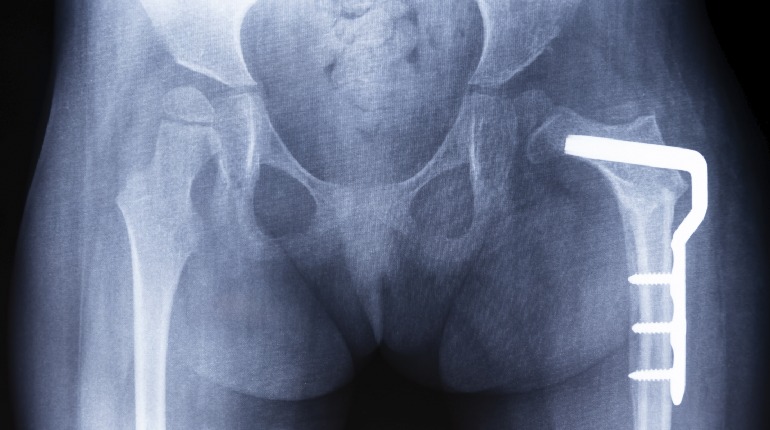Acetabular fractures are common injuries seen in orthopaedics. They occur due to high energy trauma or low energy mechanisms. The injury pattern depends upon the direction of force applied. The acetabular fracture can be classified into anterior, posterior, and transverse. Anterior column fractures involve the head of the femur (hip bone), whereas posterior column fractures affect the neck of the femur and the shaft of the femur. Transverse fractures are also known as oblique fractures. These fractures are commonly associated with hip dislocation. Fractures involving the acetabulum are often complex and require surgical management. Treatment options include closed reduction and percutaneous pinning, open reduction and internal fixation using plates and screws, or total hip arthroplasty.
Anatomy of Acetabular Fractures:
At triradiate cartilage, the pubis, ischium, & ilium fuse to produce the innominate bone. The weight-bearing dome is the name given to the upper section of the acetabulum articular surface. The inferior gluteal artery, obturator, superior gluteal artery, and medial femoral circumflex deliver blood to the outer surface. The 4th lumbar, iliolumbar, and obturator arteries give blood to the inner surfaces. The articular surface can be seen as an inversion Y with a thick bone strut linking to the sacroiliac joint, referred the sciatic buttress. The acetabulum is divided into two columns: anterior & posterior. The anterior column comprises the anterior part of the iliac wing, which connects to the superior pubic ramus through a pelvic brim, as well as the anterior part of the acetabular articular area. The posterior column originates at the typical facet of the larger sciatic notch and extends to the ischial tuberosity, continuous with the superior and inferior sciatic gaps.
An assortment of factors determines the degree of the injury, such as:
· The quantity and size of fracture pieces.
· The extent to which each component is displaced from the place — In certain circumstances, the shattered extremities of bones line up properly. Still, in more acute fractures, there could be a considerable gap between broken bits, or the fragments might overlap.
· The acetabulum and femoral head cartilage surfaces were also injured.
· Injury of soft skin and muscle, tendons, and nerves.
What causes acetabular fractures?
An acetabular fracture occurs when a force pushes the femoral head against the acetabulum. This force can be transferred from the knees, as in a head-on collision with the dashboard or falling right down a ladder onto the hip. The tip of the femur is occasionally forced out of the hip socket based on the angle of the force, resulting in hip displacement. When a high-energy impact fracture occurs, patients frequently endure substantial bleeding and other major injuries that need immediate medical treatment. A lack of bone occasionally causes acetabular fractures. This is especially frequent in older adults with osteoporosis-weakened bones. Although these individuals seldom have further wounds, they may exacerbate medical conditions such as diabetes or heart disease.
Treatment associated with acetabular fractures:
The acetabulum or hip socket is the largest bone of the body and contains the hip joint. An acetabulum fracture can occur when the femur (thighbone), pelvis, and head of the femur collide. Acetabular fractures are classified based on their location, severity, and displacement. Treatment options vary depending on the classification and may include nonoperative treatment, surgical fixation, and total hip replacement. In many cases, the treatment involves surgical intervention followed by rehabilitation. However, some patients may require only medical management.
ConclusionAn acetabular fracture is extremely severe. Movement aggravates the agony. If the accident caused nerve damage, the patient might experience numbness, fatigue, or a tingling feeling down the leg. If you suffer from an acetabular injury, you must visit your doctor as soon as possible. Acetabular fractures are generally repaired surgically. Contact an expert physician at YK Orthopaedics for the finest consultation and treatment. Contact YK Orthopaedics for immediate information and support.

